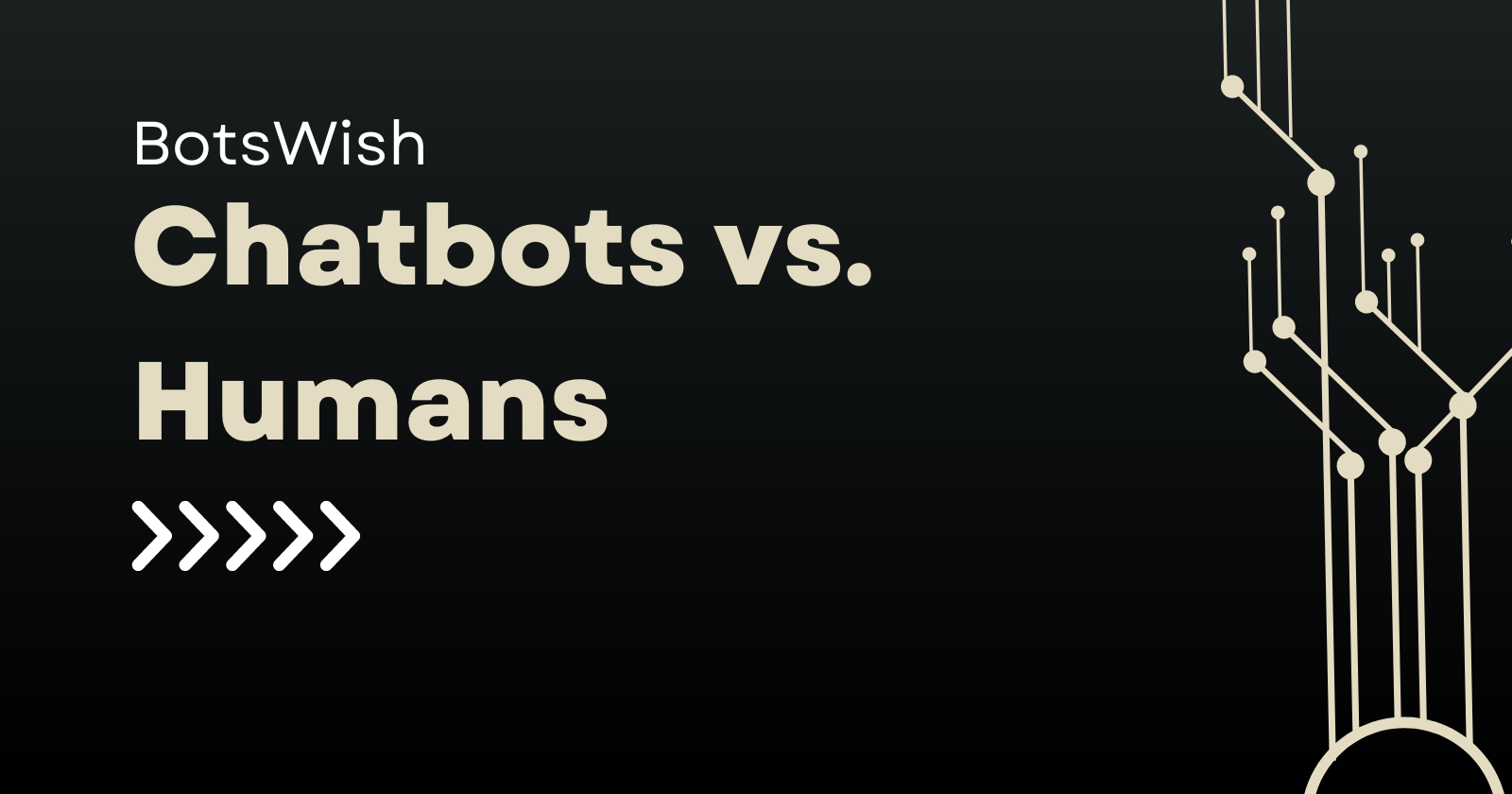Chatbots vs. Humans: When to use chatbots and when to talk to a real person
 Raman Bansal
Raman Bansal
Introduction
Chatbots have become increasingly popular in recent years as a way for businesses to improve their customer service and engagement. However, there are times when it's better to talk to a real person instead of a chatbot. In this article, we'll discuss the pros and cons of using chatbots and human agents, and when it's best to use each.
The Pros and Cons of Chatbots
Chatbots have several advantages over human agents, including:
24/7 availability: Chatbots can be available 24/7, which means customers can get help outside of normal business hours.
Consistent responses: Chatbots can provide consistent responses to customers, which can help to build trust and improve the customer experience.
Cost-effective: Chatbots can be less expensive than hiring and training human agents.
However, there are also some disadvantages to using chatbots, such as:
Limited capabilities: Chatbots are only able to handle certain types of inquiries, and may not be able to provide the level of support that a human agent can.
Lack of empathy: Chatbots are not able to show empathy or provide the same level of personalized service that a human agent can.
Limited problem-solving skills: Chatbots may not be able to solve complex problems or provide creative solutions in the same way that a human agent can.
When to Use a Chatbot
While there are certainly limitations to chatbots, there are also times when they can be incredibly useful. Here are some examples:
Basic inquiries: Chatbots are great at handling basic inquiries, such as questions about store hours or product availability.
Appointment scheduling: Chatbots can be used to schedule appointments and send reminders to customers.
Frequently asked questions: Chatbots are great for handling frequently asked questions, as they can provide consistent and accurate responses.
Quick issue resolution: Chatbots can quickly resolve simple issues, such as resetting a password or checking the status of an order.
When to Talk to a Real Person
Despite the benefits of chatbots, there are still many situations where it's better to talk to a human agent. Here are some examples:
Complex issues: When an issue is complex or requires a higher level of expertise, a human agent may be better equipped to handle it.
Emotional support: In situations where customers may be feeling frustrated or upset, a human agent can provide empathy and emotional support.
Personalized service: Human agents are able to provide a more personalized service than chatbots, which can help to build stronger relationships with customers.
Sales and upselling: When it comes to sales and upselling, human agents are better equipped to handle these situations than chatbots.
Conclusion
Chatbots and human agents both have their strengths and weaknesses, and it's important for businesses to understand when it's best to use each. By using chatbots for basic inquiries and simple issue resolution, and human agents for complex issues and emotional support, businesses can provide the best possible customer experience.
Thanks for reading
Subscribe to my newsletter
Read articles from Raman Bansal directly inside your inbox. Subscribe to the newsletter, and don't miss out.
Written by

Raman Bansal
Raman Bansal
ML enthusiast